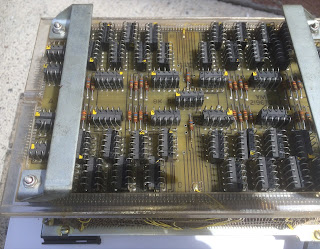By the time Cray did a photo-op with what was to be the beleaguered, incomplete Cray 4, the company was in free-fall. Cray Computer had burned through $300 million trying to make Gallium Arsenide modules work at 1GHz speed. Gone were the heady days of computers selling themselves.
The fluorinert waterfalls on four test computers were running dry as bankruptcy hit in March 1995.
Seymour Cray's first supercomputer, the Cray 1, was two thirds as fast as an Intel 386 CPU. He had joined ERA after a stint as a radioman during WWII. ERA was set up by the government to transfer wartime tech to the private sector and Cray was set to be one of its biggest beneficiaries.
As part of the bankruptcy, many Cray 4 artifacts landed in Dallas, Texas as part of a settlement with a creditor that made his trademark blue and white twisted pair.
Here is my collection including a single Cray 4 module, boxes of photo-masks, and documentation aplenty.
Included is an Apple Nubus card made for testing the C4 CPU on a Mac computer. Jobs and Cray had formed a mutual admiration society with each using the others products in development work.























